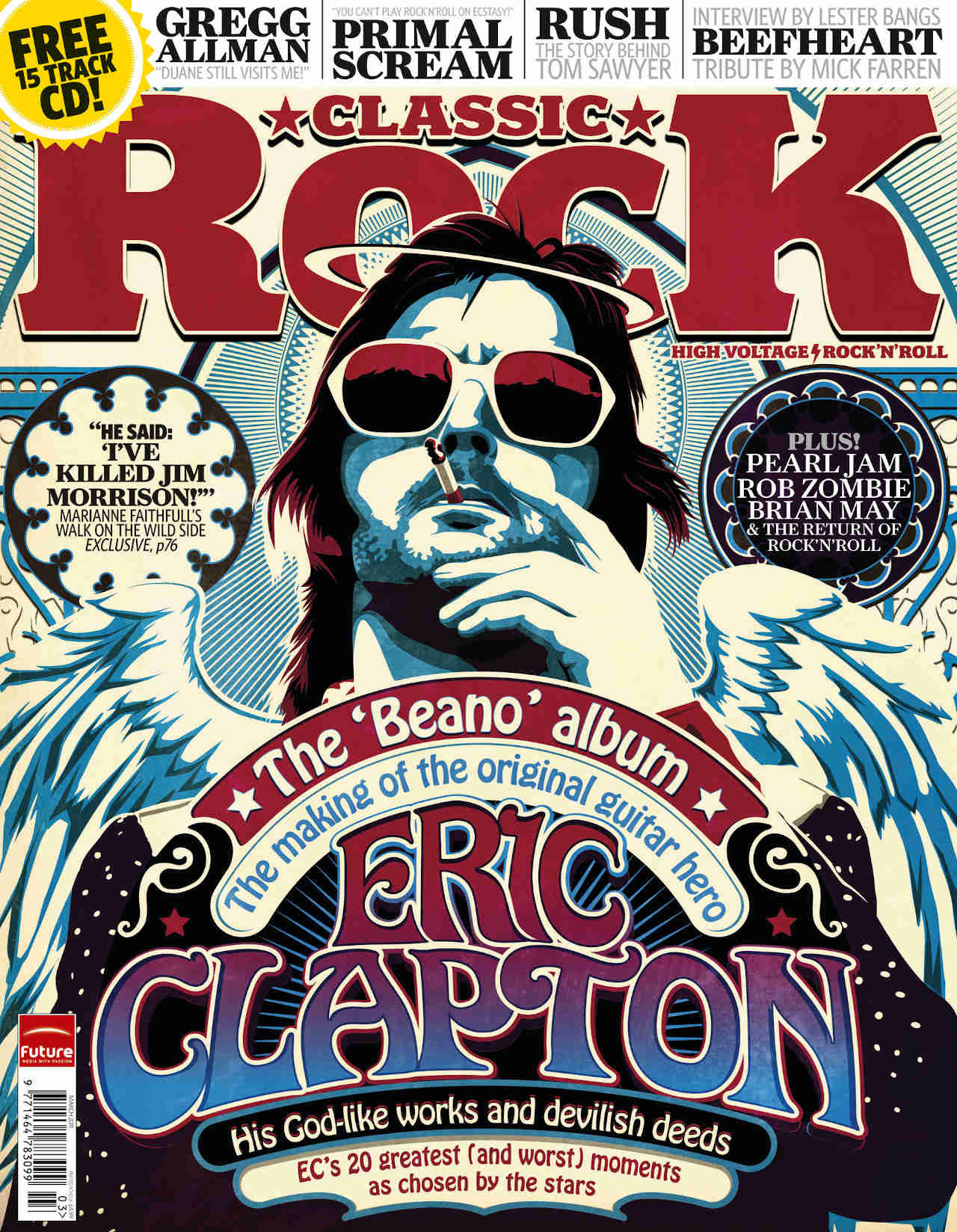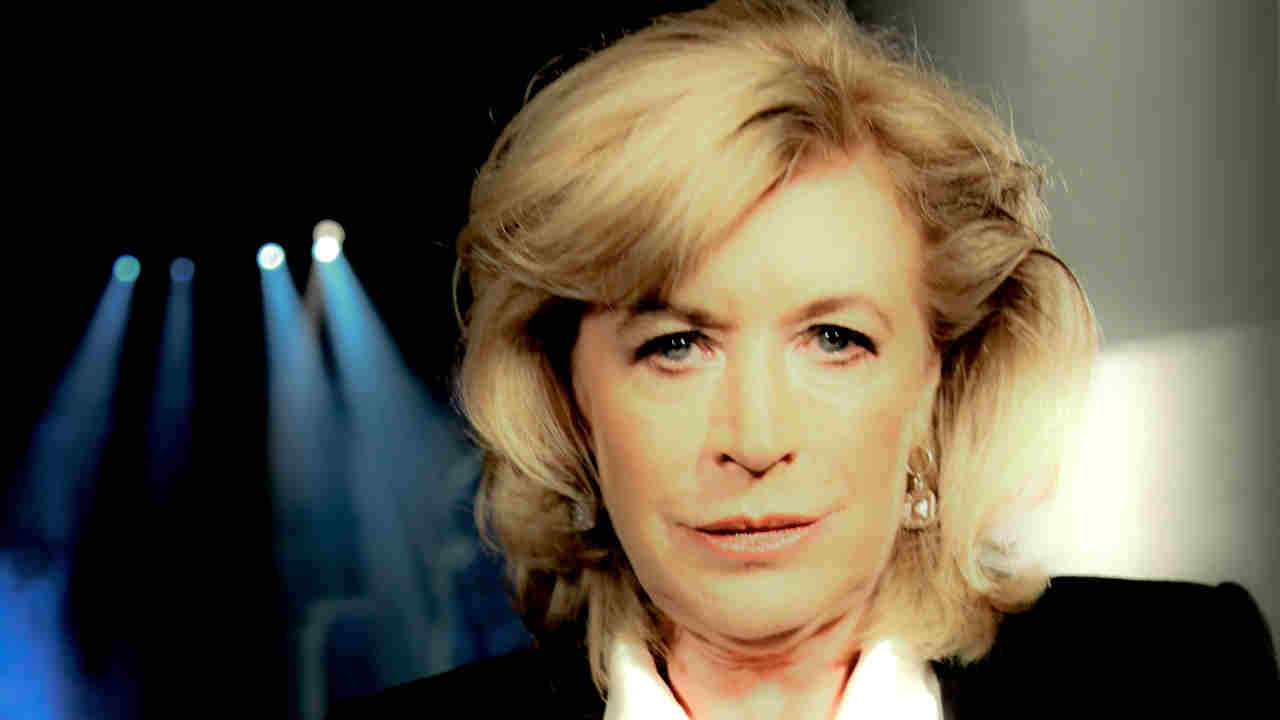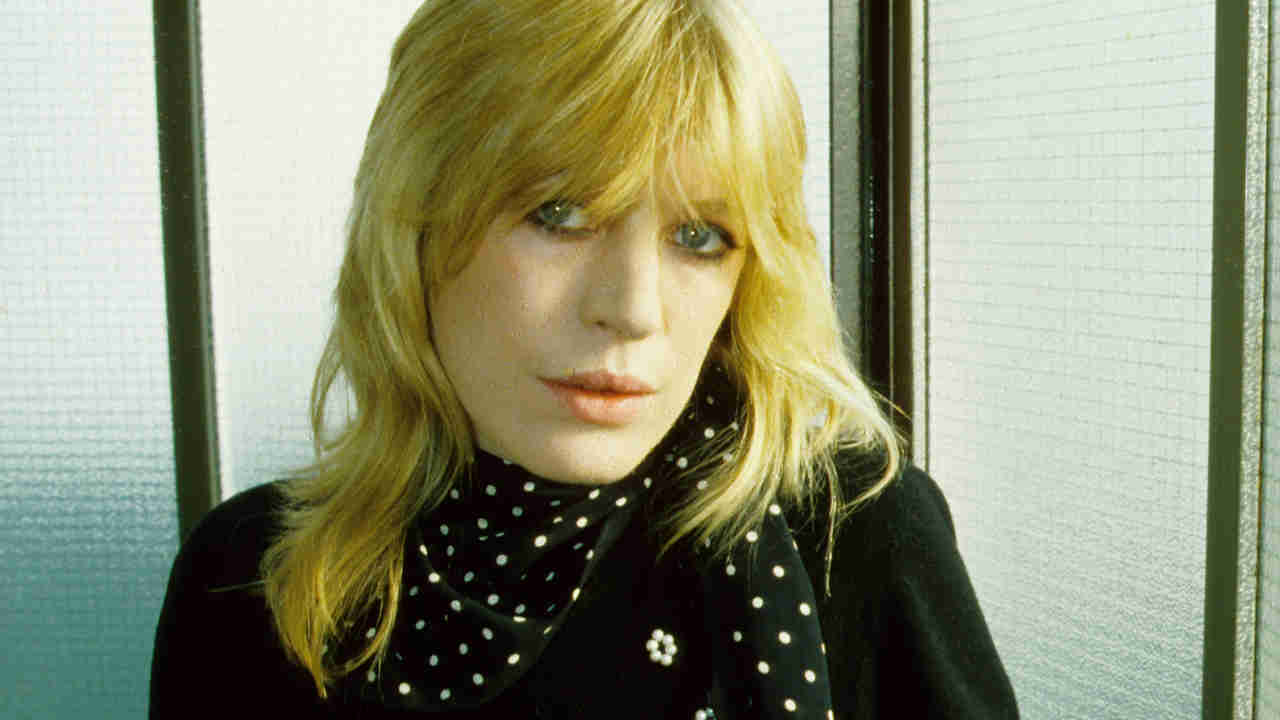The late Marianne Faithfull, who died on January 30 at the age of 78, spent much of the 60s at the centre of the British music scene. In 2011, as she prepared to release her latest album, Horses And High Heels, she looked back on her friendship with such luminaries as the Rolling Stones and The Beatles – and the rumours about what really happened the night Jim Morrison died.

Spring 1964. Rolling Stones manager Andrew Loog Oldham is about to introduce Mick Jagger, the dark prince of British pop, to a fashionable society girl called Marianne Faithfull (who happens to be related to 19th-century Austrian nobleman Leopold von Sacher-Masoch) and has pretensions to be a folk singer. We’re at a smartly Swinging London party thrown by Beatles pal Peter Asher, so Lennon and McCartney are also in the house, as are the rest of the Stones. Before Oldham can do the honours, Jagger – evidently smitten by the blonde 18-year-old convent girl – suddenly pours his glass of champagne down her very impressive and highly visible cleavage. Not the most romantic of gestures, perhaps, since Faithfull is also with her future husband, art gallery owner John Dunbar, at the time. Salacious tales have dogged Faithfull ever since, which is why she admits that today she is better known for her life story than for her career.
Marianne, today sitting in the penthouse suite of the Mayfair Hotel in London W1, is approaching her 64th birthday with aplomb. “I like to live in a very high style indeed,” she announces. “I never made a lot of money out of the music business, but spending so much time with Mick spoiled me. I saw myself as a rich person, because I hung with the Stones, who were stinking rich. I’m not – although I do live in the most wonderful apartment in Paris with a huge fireplace. But we really must talk about my album, darling, or I’ll get into trouble.”
Ah yes, Marianne Faithfull’s new album. It’s called Horses And High Heels. Produced by her long-time collaborator, the musicologist Hal Willner, it’s not a full-on Mazzer-and-guests affair like Kissin’ Time and Easy Come Easy Go. “I’m covering some great songs, like Goin’ Back, and a Jackie Lomax number and an Allen Toussaint song. There are guests: Dr. John – groovy old Mac Rebennack – Lou Reed, and Wayne Kramer from MC5. But he was dubbed on. In fact so was Keith Richards when we recorded Sing Me Back Home. That was a shame, but probably better because I get fraught around Keith. I loved his book, Life. I’ve just read it.”
In that autobiography, Richards refers to Marianne’s old boyfriend Jagger’s “tiny todger”. Was that accurate?
“Not quite, but nearly. When he writes about me I’m rather touched, especially when he admits that I contributed to Stones songs. He almost treats me like an equal! The one I claimed above all is Sister Morphine. It took me years to get a writing credit [Faithfull also kick-started Sympathy For The Devil, since she gave Jagger the book that inspired it, and she was the subject of Wild Horses and Dead Flowers].

“Trouble is the Stones don’t give points. Mick won’t do it. They don’t ‘write’ with other people – in theory. But they were grateful to use my mind and my talents – without credit. I kinda knew that was the deal, but when I was with Mick in the mid-sixties I was really young and naïve, so I sacrificed my name. Obviously I also contributed to You Can’t Always Get What You Want and Dear Doctor – junk songs. I don’t listen to the Stones any more, but I know they used me as a muse for those tough drug songs. I knew I was being used but it was for a worthy cause. I don’t feel that any more. I’d love to get: a) some credit, and b) some bloody money for the songs I helped on. Mere inspiration? I did bloody more than that.”
Is Mick as selfish as legend portrays him to be?
“No comment. But it would be unrealistic to expect him to share. He isn’t like that. I can’t help loving Keith, not on a Christmas-card level but I’ll send him a copy of the album with a fax and a note: ‘Here it is, loved your book, thank you for everything you said about me.’ I’m very fond of Keith and Anita Pallenberg [Richards’ 60s girlfriend – the three of them are said to have enjoyed an intimate relationship]. I’d meet up with them; I’d only bump into Mick in a concert situation. Friendship is totally inappropriate. I still see Charlie [Watts] because he lives in Paris.”
Indelibly linked to the Rolling Stones at their most hedonistic, Faithfull still recalls some good times. “Plenty. Everyone focuses on the Redlands bust at Keith’s house, but that’s a negative. Mick and I had wonderful times when we’d go off ley-line hunting in his Aston Martin, or in Keith’s Bentley. We travelled all over the West Country and Ireland. We went to the north in disguise. Mick was very interested in all that ley-line stuff and the Arthurian legends [at one point he believed he and Keith were Lancelot and Galahad and Faithfull was Guinevere]. He was into aliens and UFOs. I got into the communing with the earth stuff from my husband, John Dunbar. Mick was a wonderfully civilised partner in all that. We used to go travelling with the actor James Fox [who played opposite Jagger in Nic Roeg’s classic film Performance]. It’s such a shame that everything I did with the Stones is boiled down to the Sussex bust when Mick was such a very interesting companion. Fuck yeah!”
Marianne ascribes her subsequent recording career after her string of 60s hits, including As Tears Go By and This Little Bird – to time spent hanging out with the highest echelons of rock royalty ever: The Beatles and the Stones.

“I probably couldn’t write now without those experiences. I met The Beatles straight away. I met Paul McCartney via Peter Asher [brother of Macca’s 60s girlfriend Jane Asher], and I met John Lennon because Paul and John were close friends of John Dunbar. Lennon and John took thousands of acid trips together. Lennon’s attitude towards me changed a lot when I went off with Mick. He didn’t like that at all. I’d see him and he was always in such a wild state on acid it scared me. He really scared me, actually. All the emotion that came out on the Plastic Ono Band was there for years for all to see. He had huge number of demons. Maybe we all do, but he had more than most.
“I’m still very close to Paul. I sang on All You Need Is Love. I went to a lot of Paul’s sessions – I was there when he did Lovely Rita and Fixing A Hole. Always late evening. That’s when I saw John [Lennon] mostly. He was very forbidding. He didn’t like other people being there. I was always very shy and quiet. Even with the Stones I didn’t want to be noticed. I sang on You Can’t Always Get What You Want, but I wore a dark green floppy hat so you couldn’t see me. At least Paul was welcoming. I liked Linda McCartney very much but she didn’t like me. She wasn’t sure whether I’d had an affair with Paul. She thought everybody had because he had a lot of affairs. Not me though. I wasn’t one of his affairs.”
Once the pot and acid wore off and heroin became the drug of choice in London rock circles after 1968, Faithfull’s relationship with Jagger deteriorated rapidly. “It sickens me, now that I’m clean. Heroin is bad and cocaine may be worse. It ruins you. And it’s so easy. Even after I took treatment at rehab, I relapsed. I took coke and alcohol and sleeping pills. Then I gave up the first two because I contracted hepatitis C. The sleeping pills were the last to go – apart from the fags. I’ve got an addictive personality. I just can’t take it. I’d stop the ciggies, but I’m scared of getting really fat.”

Jagger dumped Marianne in 1970, at which time she moved to Paris and began a relationship with Count Jean de Breteuil, the French aristocrat who is said to have been a dealer to Brian Jones, Keith Richards, Janis Joplin, and Jim Morrison and his partner Pamela Courson. Faithfull has been placed in Morrison’s company shortly before his death but she refutes that completely. “I was in Paris at the same time. That’s true. But I never saw him or had anything to do with him. Did Jean have an affair with Pamela? I didn’t know that.
“I was living with Jean at L’Hotel in Paris, and it seems that he was the guy who killed Jim Morrison. That’s what he said, anyway: ‘I’ve killed Jim Morrison’. He provided the gear. I didn’t know Jim was found in the Rock And Roll Circus nightclub or that he was found dead in the toilet. I didn’t know about him being taken back to his apartment in a Mercedes. Did the doctor say he was dead? I was left on my own in the room when he got the call from Pamela. I’d taken Tuinals [barbiturate] and was completely out of it, so I missed that. Then Jean got back and beat me, which I do remember. He was in the most terrible state ever. Even bad by his appalling standards. Years later I can connect it all. He dragged me to his mother’s house in Marrakech in a huge hurry. He wanted to get over this terrible memory. It was obviously such a huge thing – as he said – to have killed Jim Morrison.”
One of Classic Rock’s contacts, Roger Steffens, recalled meeting Jean and Marianne in Morocco, and said the Count had told of a nightmare few days that began with a car crash, included the attempted suicide of a friend, and ended with both of them finding Morrison’s corpse. Faithfull doesn’t dispute a possible meet. “But nothing else,” she says. “Maybe there was a car crash. That sounds familiar. Many people committed suicide or OD’d in Jean’s wake. He was seriously bad news. Even I could see that he was a curse. Once we left Morocco I ditched him. I didn’t want to be another of his casualties. As for anyone involved in Jim Morrison’s death – that was just too much.
“He still tracked me down to my mother’s cottage in Oxfordshire when I was recuperating in 1971 and tried to get me back! There was death hanging over him. Luckily I didn’t take his smack in Paris, just my Tuinals.”
Steffens remembers Jean and Marianne bringing an advance copy of the Stones’ Sticky Fingers album with them to Marrakech. “Yeah,” Marianne says, “because Jean was also Keith and Anita’s dealer in Chelsea and the Stones contact when they went to Nellcôte to record. As far as the Morrison thing goes, it isn’t the first time I’ve been placed as Sister Morphine herself. I am not she. But I had my darkest days after being with Jean. That’s why everybody connected to him died and why he OD’d in a most awful fashion. Pamela, Jim, they died. But I escaped. That heroin existence really fucks people up. They lose the will to live. I never did. I always felt I’m going to get out of this. And I did.”
Indeed, Faithfull’s tale is all about survival, whether it’s from the clutches of addiction on the streets of Soho and the squats of Notting Hill, or more recent battles with breast cancer, stage collapses and nervous exhaustion.
As the interview draws to a close, she orders some food and settles back into the sofa. “Ridiculous isn’t it, darling… My destiny was always was to stand alone, not to be part of any entourage,” she says. “But look at this suite. Isn’t it wonderful? I feel like a Grande Dame. Of course, I couldn’t afford to stay here. They’ve let me have it for free. Perhaps I must be quite famous after all.”
Originally published in Classic Rock issue 155, February 2011


